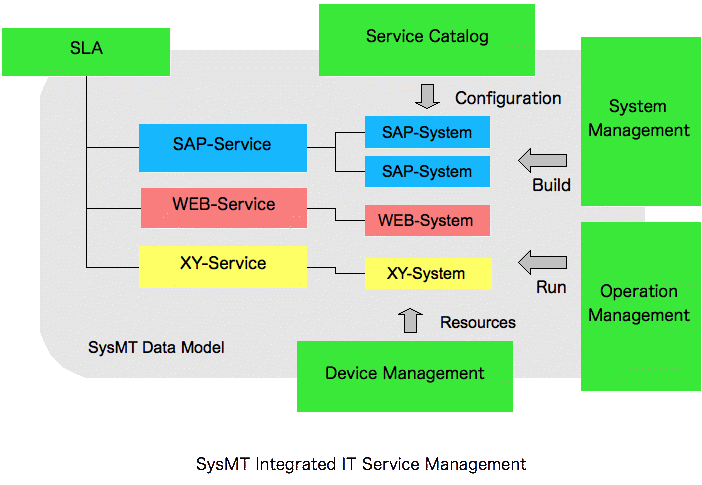 |
| 1 Basics |
|---|
| Back to TOC |
The ITIL best practices framework describes several methods and processes to organize the IT service management in the datacenter environment. Since the framework is a general recommendation about how a datacenter should be organized, it makes no approach for a specific data modeling and procedure implementation.
From my experience, the precision, the reduction and integration of each process are important aspects for the successful introduction of a structure service management.
SysMT starts, where the ITIL recommendation ends. In this sense, SysMT gives a specific implementation of several ITIL processes. The implementation is based on the experience for about several years in a big datacenter environment to organize system and change management for SAP system landscapes. The implementation also can be used to manage system landscapes with similar requirements regarding the system architecture or the change management. For example, this includes native database systems but also any web or application servers.
To understand the idea and the concept, which SysMT is based on, we first explain some basic aspects. We give an introduction into the methodology, how large organizations can collborate efficiently using strong rules.Then the technical concept of SysMT is explained and an installation guide is given to install the software. As third, an overview is given about the functional modules, SysMT provides.
1.1 Coverage
The SysMT approach follows the principle of a seemless integration of the most important business processes in a datacenter environment. Starting with the service level management and service design processes, the corresponding asset and service objects are managed. In this way, service objects alway have an application context on which a number of rules are defined ( system workflow, approval process ). Subsequently, the system management for the deployment process and change management for system operation are added.
 |
All data is managed conistently in a powerful relational database model. Based on this design on this design, operational processes can be implemented and executed much more efficient. Transparency and control is given for each managed object anytime.
1.2 Functional modules
In SysMT, the several kind of activities which have been described above, are mapped to corresponding functional modules. An integrated data model ensures that all relevant information is consistent and up to date.
Actually, the following functional sections are available
| Module | Description |
|---|---|
| Device Management | Assets are described and registered |
| Service Management | All service relevant information like service catalog, SLA and managed services |
| System Managament | System planning information which later can be used for deployment |
| Operation | Thread and Maintain management including approval workflow |
| Administration | All administration activities including user and group management |
Each section is described in detail in the corresponding chapter of this documentation.
1.3 Technical framework
As a web based application, SysMT requires a HTML-browser which enables users and administrator to use and administrate the application. SysMT is based on the RIA Vaadin Framework which enables the application to provide a powerful graphical user interface.
 |
Using the vaadin paradigm and adapted from an earlier html and mod_perl based version, SysMT could be implemented as a powerful and stable product. After the application has been set up, all user and administrative tasks can be done via the web browser.
